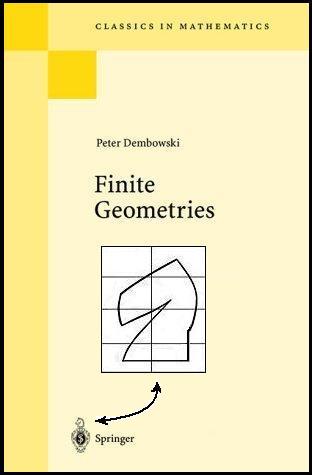(This post was suggested by the order of reading characters in
traditional Chinese calligraphy — top to bottom, right to left .)

— Emily Dickinson
(This post was suggested by the order of reading characters in
traditional Chinese calligraphy — top to bottom, right to left .)

From Wikipedia —
"Many Leibniz scholars… seem to agree that he intended
his characteristica universalis … to be a form of …
ideographic language. This was to be based on a
rationalised version of the 'principles' of Chinese characters…."
See as well O Nine, Chinese Calligraphy, and Holy Field.
See today's earlier posts Ode and True Grid (continued) and, in the latter's
context of tic-tac-toe war games — Balance, from Halloween 2005 —

“An asymmetrical balance is sought since it possesses more movement.
This is achieved by the imaginary plotting of the character
upon a nine-fold square, invented by some ingenious writer of the Tang dynasty.
If the square were divided in half or in four, the result would be symmetrical,
but the nine-fold square permits balanced asymmetry."
— Paraphrase of a passage in Chiang Yee's Chinese Calligraphy
A Sunrise
for Sunrise
“If we open any tract– Plastic Art and Pure Plastic Art or The Non-Objective World, for instance– we will find that Mondrian and Malevich are not discussing canvas or pigment or graphite or any other form of matter. They are talking about Being or Mind or Spirit. From their point of view, the grid is a staircase to the Universal, and they are not interested in what happens below in the Concrete.”
Yesterday’s entry featured a rather simple-minded example from Krauss of how the ninefold square (said to be a symbol of Apollo)

may be used to create a graphic design– a Greek cross, which appears also in crossword puzzles:

Illustration by
Paul Rand
(born Peretz Rosenbaum)
A more sophisticated example
of the ninefold square
in graphic design:
“That old Jew
gave me this here.”
— A Flag for Sunrise
Balance

"An asymmetrical balance is sought since it possesses more movement. This is achieved by the imaginary plotting of the character upon a nine-fold square, invented by some ingenious writer of the Tang dynasty. If the square were divided in half or in four, the result would be symmetrical, but the nine-fold square permits balanced asymmetry."
— Chiang Yee, Chinese Calligraphy, quoted in Aspen no. 10, item 8
"'Burnt Norton' opens as a meditation on time. Many comparable and contrasting views are introduced. The lines are drenched with reminiscences of Heraclitus' fragments on flux and movement…. the chief contrast around which Eliot constructs this poem is that between the view of time as a mere continuum, and the difficult paradoxical Christian view of how man lives both 'in and out of time,' how he is immersed in the flux and yet can penetrate to the eternal by apprehending timeless existence within time and above it. But even for the Christian the moments of release from the pressures of the flux are rare, though they alone redeem the sad wastage of otherwise unillumined existence. Eliot recalls one such moment of peculiar poignance, a childhood moment in the rose-garden– a symbol he has previously used, in many variants, for the birth of desire. Its implications are intricate and even ambiguous, since they raise the whole problem of how to discriminate between supernatural vision and mere illusion. Other variations here on the theme of how time is conquered are more directly apprehensible. In dwelling on the extension of time into movement, Eliot takes up an image he had used in 'Triumphal March': 'at the still point of the turning world.' This notion of 'a mathematically pure point' (as Philip Wheelwright has called it) seems to be Eliot's poetic equivalent in our cosmology for Dante's 'unmoved Mover,' another way of symbolising a timeless release from the 'outer compulsions' of the world. Still another variation is the passage on the Chinese jar in the final section. Here Eliot, in a conception comparable to Wallace Stevens' 'Anecdote of the Jar,' has suggested how art conquers time:
Only by the form, the pattern,
Can words or music reach
The stillness, as a Chinese jar still
Moves perpetually in its stillness."
— F. O. Matthiessen, The Achievement of T.S. Eliot,
Oxford University Press, 1958, as quoted in On "Burnt Norton"
Well Done
“So tell me about the matrix reloaded… and what it’s like to finish a job well done.”
— Weblog entry by Harvard student, May 15, 2003
The matrix reloaded:
See chapter VII, “Composition,” in Chinese Calligraphy: An Introduction to Its Aesthetic and Technique, by Chiang Yee, Harvard University Press, first published April 21st, 1938.
A job well done:

“The Best is Yet to Come”
— Epitaph of Francis Albert Sinatra
See Wang Wei: Journey to the Source of the Peach Blossom River .
Related Hollywood remark:
"You've blown communication
…as we've known it… right out of
the water. You know that, don't you?"
— Cliff Robertson in Brainstorm (1983)
To a Young Scholar
truth is truth, tautalogous and true; what beauty is, that’s the thing to know
Posted 11/16/2002 at 1:51 am by TheYoungScholar
To a young scholar:
Guqin
Go
Calligraphy
Painting
Posted 11/16/2002 at 8:16 am by m759

Powered by WordPress